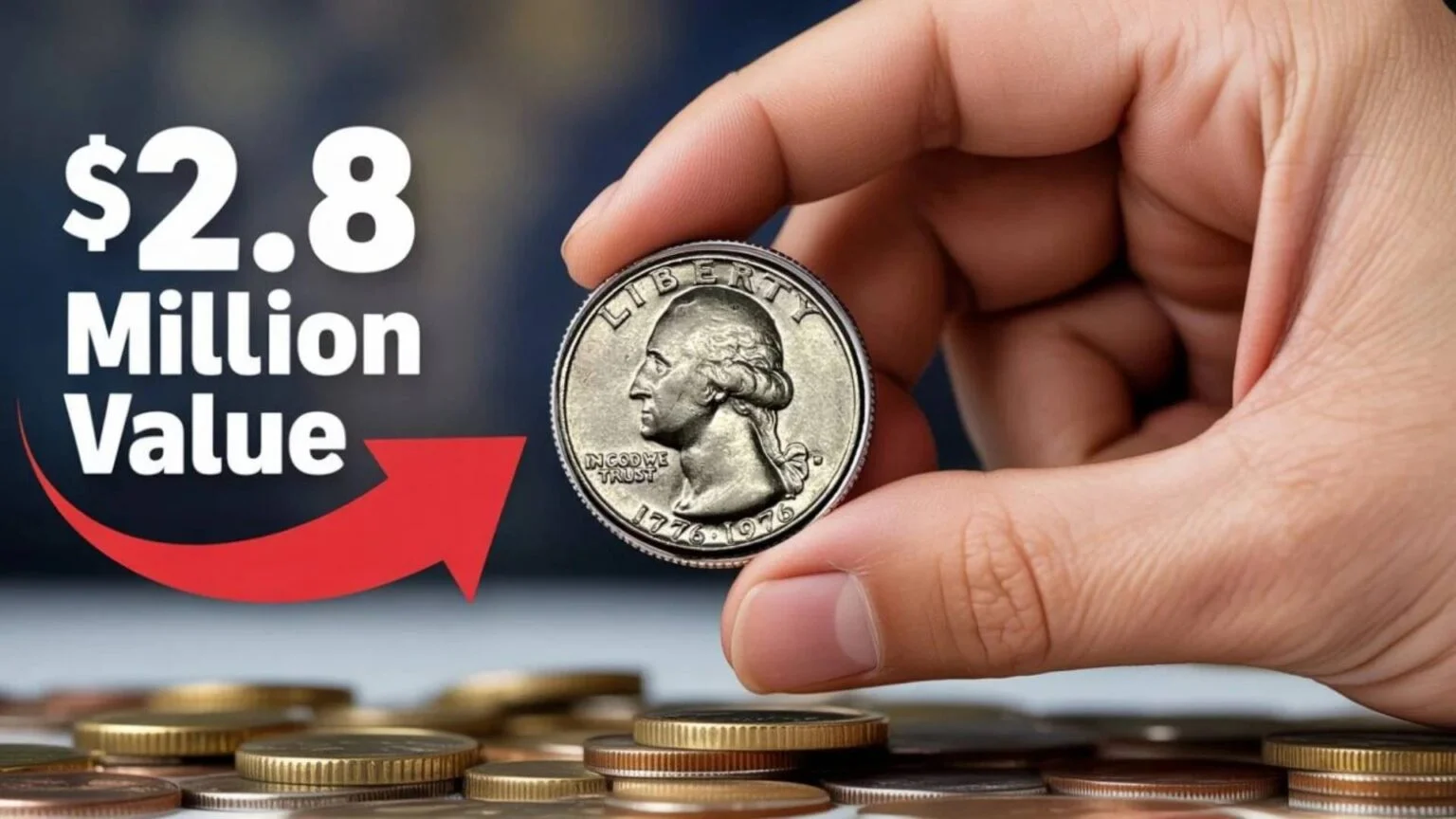1976 Bicentennial Quarter : Imagine digging through a jar of spare change and spotting a 1976 Bicentennial quarter. At first glance, it’s just 25 cents. But what if that ordinary coin could actually be worth thousands—or even a million dollars? Some rare minting errors and proof-set editions from that year have turned ordinary quarters into prized collector’s items.
What Is the 1976 Bicentennial Quarter?
The 1976 Bicentennial quarter was issued to celebrate the United States’ 200th anniversary. Instead of the usual eagle design on the reverse, it features Independence Hall, surrounded by the dual date 1776–1976. Billions were minted at Philadelphia and Denver, but only a tiny fraction have rare characteristics that make them valuable today.
History and Background
The U.S. Mint released Bicentennial quarters in 1975–1976. Some coins were included in special proof sets and silver-clad collector editions. Minor minting mistakes during production, such as off-center strikes or doubled dies, have turned a handful of quarters into valuable collectibles.
Why Some 1976 Quarters Are Worth a Fortune
While most Bicentennial quarters are still worth just 25 cents, certain rare varieties command premium prices. Key factors driving value include:
- Minting Errors: Doubled images, missing or incomplete designs, and off-center strikes.
- Silver Content: Proof and collector sets with 40% silver are highly sought after.
- Condition/Grade: High-grade coins, particularly MS65 or above, fetch the highest prices.
How to Identify Valuable 1976 Bicentennial Quarters
- Check for Mint Errors: Look closely at “Liberty,” Monticello, or edge lettering for doubling or missing elements.
- Inspect Composition: Silver-clad coins are more valuable than standard copper-nickel.
- Assess Condition: Coins in pristine or uncirculated condition are worth significantly more.
Table 1: Valuable 1976 Bicentennial Quarter Types
| Type | Key Feature | Typical Value |
|---|---|---|
| Proof Silver Quarter | 40% silver composition | $25 – $2,500+ |
| Double Die Error | Doubled Liberty or Monticello | $500 – $100,000+ |
| Off-Center Strike | Misaligned design | $50 – $20,000+ |
| Missing Edge Lettering | Blank or incomplete edge | $10,000 – $1,000,000+ |
Notable Facts About Bicentennial Quarters
- It was the only U.S. quarter to feature a dual date (1776–1976).
- Millions remain in circulation, but only a tiny percentage have valuable mint errors.
- Six-figure sales of rare misstruck coins have been documented in recent years.
Expert Tips for Collectors
- Use Magnification: Many minting errors are too small to notice with the naked eye.
- Get Professional Grading: Services like PCGS or NGC can authenticate and boost the value of your coin.
- Track Auctions: Knowing market trends ensures you sell at the best possible price.
Table 2: Value Comparison by Condition
| Condition | Value Range |
|---|---|
| Circulated | $0.25 – $50 |
| Uncirculated (MS60-MS63) | $50 – $5,000 |
| High Grade (MS65+) | $5,000 – $1,000,000+ |
FAQs
Q: Can a regular 1976 quarter be worth more than face value?
A: Only if it has rare errors, comes from a silver proof set, or is high-grade uncirculated.
Q: How rare are million-dollar Bicentennial quarters?
A: Extremely rare. They usually involve unique mint errors or flawless silver-proof coins.
Q: Where can I sell a rare 1976 quarter?
A: Certified coin dealers, auctions, and numismatic marketplaces are the safest options.
Conclusion
The 1976 Bicentennial quarter is more than just pocket change—it’s a piece of history that could hide substantial value. Rare minting errors, silver proof coins, and high-grade editions have turned ordinary quarters into million-dollar treasures. Next time you sort through change, take a closer look. That seemingly simple quarter could be your hidden fortune.

